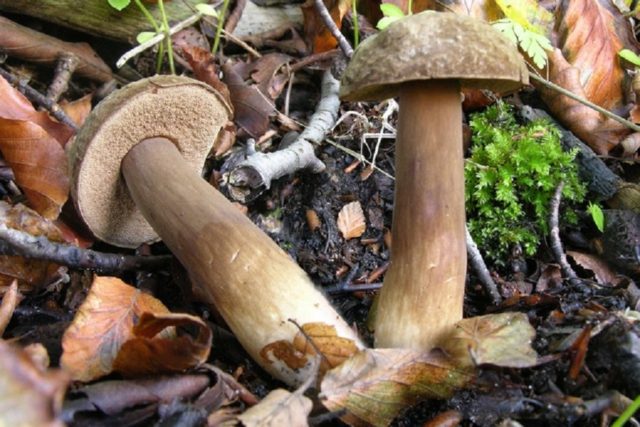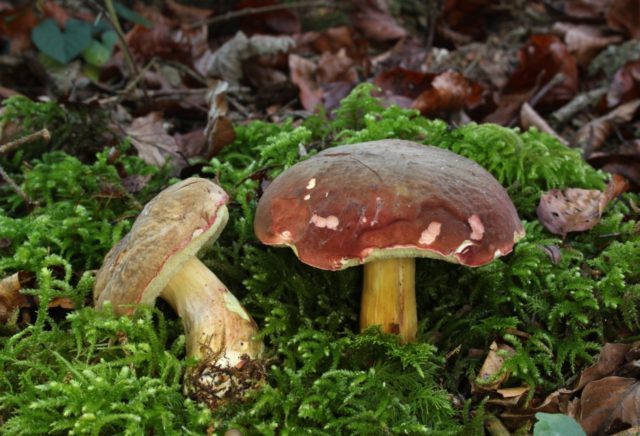Content
Porphyry porphyry, also called as sore purple or redsporous porphyrellus, belongs to the fungi of the genus Porphyrellus, family Boletaceae. Despite its external resemblance to many edible mushrooms with good taste, it has a rather unpleasant aroma.
Description of porphyry porphyry-spore
Porphyry porphyry is a mediocre mushroom, outwardly similar to boletus and boletus, but at the same time in its color it does not have bright shades. Gloomy and unremarkable, this mushroom seems to indicate that it is better not to collect it.
In fact, outwardly, it really looks like some valuable species. The hat is matte, gray, darkens on the cut, the size varies from 4 to 12 cm. The shape is hemispherical, inflated, with age it opens, becoming cushion-shaped. Dry and smooth to the touch, may crack as it grows closer to the edge.
The spore-bearing layer is tubular, not growing to the pedicle. When pressed on the cap, it changes color from yellow-gray to blue-brown. Spores are ellipsoidal, powder color is red-brown.
The surface of the fruiting body is velvety. The smell and taste are unpleasant, so this mushroom has no culinary value. The leg is cylindrical, often smooth, has a bright brown tint, the length directly depends on the growing conditions and can be from 8 to 10 cm with a thickness of up to 2 cm.
Is it possible to eat porphyry porphyry
Porphyry porphyry is a conditionally edible variety. According to its culinary value, it is assigned to the second category.
Taste qualities of the mushroom porphyry porphyry-spore
Since the mushroom belongs to the second category, it is rarely eaten. And all because of the unpleasant taste and pungent odor, which can persist even after prolonged heat treatment. When fresh, this specimen is not at all suitable for cooking, since it is able to saturate all the ingredients with its bitter taste, which will completely ruin the dish. Some culinary experts still resort to marinating this forest product in a hot way with a lot of spices and spices.
False doubles
Porphyry porphyry-spore among poisonous and inedible mushrooms has no similarities. But, having met him in the forest, an inexperienced mushroom picker may confuse this specimen with:
- boletus ordinary, since it also has a gray-brown hat, it belongs to edible mushrooms;
- ailing - outwardly similar, but has a thicker and shorter leg, a distinctive feature is that it belongs to the first category;
- goat - much smaller in size and has a thin long leg, is edible;
- flywheel - has a lighter or brighter cap of a uniform color, depending on the species, grows in moss, is classified as edible.
Unlike all the described specimens, it is very easy to recognize porphyric porphyry, because its pulp, when broken, emits a pungent odor that is absent in other mushrooms.
Collection rules
You can meet this species in coniferous, less often deciduous forests. It grows in grass or dry wood.
If you plan to collect this mushroom, then you should do it in the thicket of the forest. It is highly discouraged to use specimens growing in forest plantations near roads or various industrial enterprises.
Use
Belonging to the second category, porphyry-spore porphyry is practically not used for cooking. Usually it is only pickled for the winter with various herbs and spices.
Conclusion
Porphyry porphyry is conditionally edible. But inexperienced mushroom pickers can be very disappointed when cooking it, since the dish will not be appetizing at all: with an unpleasant aroma and a terrible aftertaste.














